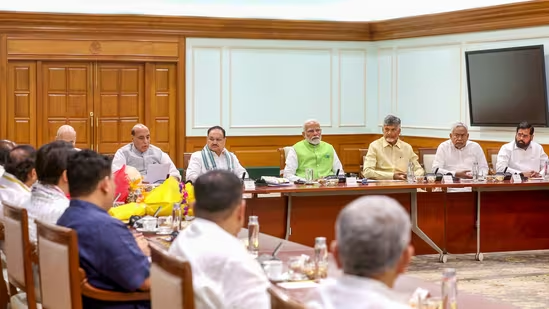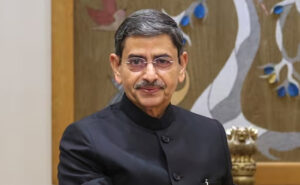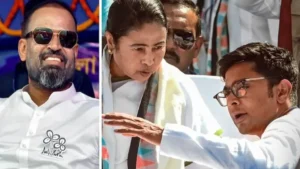The 2024 Lok Sabha elections have brought a seismic shift in India’s political landscape. Unlike the centralised control the BJP enjoyed in 2014 and 2019, the dynamics of power now tilt more towards the coalition partners. Despite securing a majority, the results deviated significantly from exit poll predictions. Here are five charts that capture the essence of this electoral saga.
1. BJP is Down Compared to 2019 but NDA Allies are Up
The BJP’s dominance has visibly waned, losing 63 seats from its 2019 tally, bringing their count down to 240. Conversely, the NDA allies have increased their seats from 49 in 2019 to 53 in 2024. This shift implies that the allies will wield greater influence, transforming the previously centralised BJP-led government into a more coalition-dependent entity. Although the BJP still holds more seats than in the 1999 Atal Bihari Vajpayee government, the balance of power is now discernibly in favor of the allies.
2. Congress Regains Ground but Mostly Against Others, Not BJP
One of the defining narratives of these elections is Congress’s resurgence, albeit more so against parties other than the BJP. The Congress strike rate in direct contests with BJP surged to 28.8% from 7.9% in 2019. Although still lower than its performance in 1999, 2004, and 2009, Congress has shown significant improvement in non-BJP contests, with a 32.7% strike rate, the second highest since 1999. In absolute terms, Congress has made notable gains against BJP in direct contests, highlighting its partial recovery.
3. A Tale of Two Styles of Mandal Politics
The BJP’s performance in Uttar Pradesh and Bihar offers contrasting lessons in Mandal politics. In Uttar Pradesh, the BJP fell short, finishing behind the Samajwadi Party (SP), which leveraged a more representative caste alliance to secure a 60% strike rate. In Bihar, however, the NDA managed to minimize losses with the BJP performing relatively better. The differing outcomes underscore the necessity for a broader-based Mandal strategy beyond the traditional Muslim-Yadav combination to counter BJP’s influence effectively.
4. BJP Peaked in West Bengal in 2019
West Bengal, a crucial battleground, witnessed the BJP’s decline from its peak in 2019 when it won 16 seats. The 2024 results mirror the 2021 assembly elections, with no significant gains for the BJP. This plateau suggests that despite its initial surge, the BJP has struggled to consolidate and expand its influence in the state, highlighting the challenges it faces in transforming regional electoral successes into long-term dominance.
5. Mixed Results for BJP’s Strategy in Maharashtra
Maharashtra, India’s second-largest state by MPs, has been a battleground of strategic maneuvers. After the Shiv Sena’s exit from the NDA post-2019 assembly elections, the BJP faced a formidable alliance threat. Although the BJP engineered splits within the Shiv Sena and NCP, the results show limited success. The NDA won 17 out of 48 seats, a sharp drop from 41 in 2019. However, this performance is better than the potential losses had the Shiv Sena and NCP remained united with Congress.
Conclusion
The 2024 Lok Sabha elections have redefined India’s political theatre, showcasing a shift from a centralised BJP-led governance to a more coalition-dependent setup. The BJP’s reduced seat count, Congress’s partial resurgence, the nuanced dynamics of Mandal politics, regional peaks and troughs, and the complex political chess in Maharashtra collectively paint a vivid picture of the evolving democratic narrative. As the NDA braces for a new term, the balance of power within the alliance will be crucial in shaping India’s political and policy landscape.







